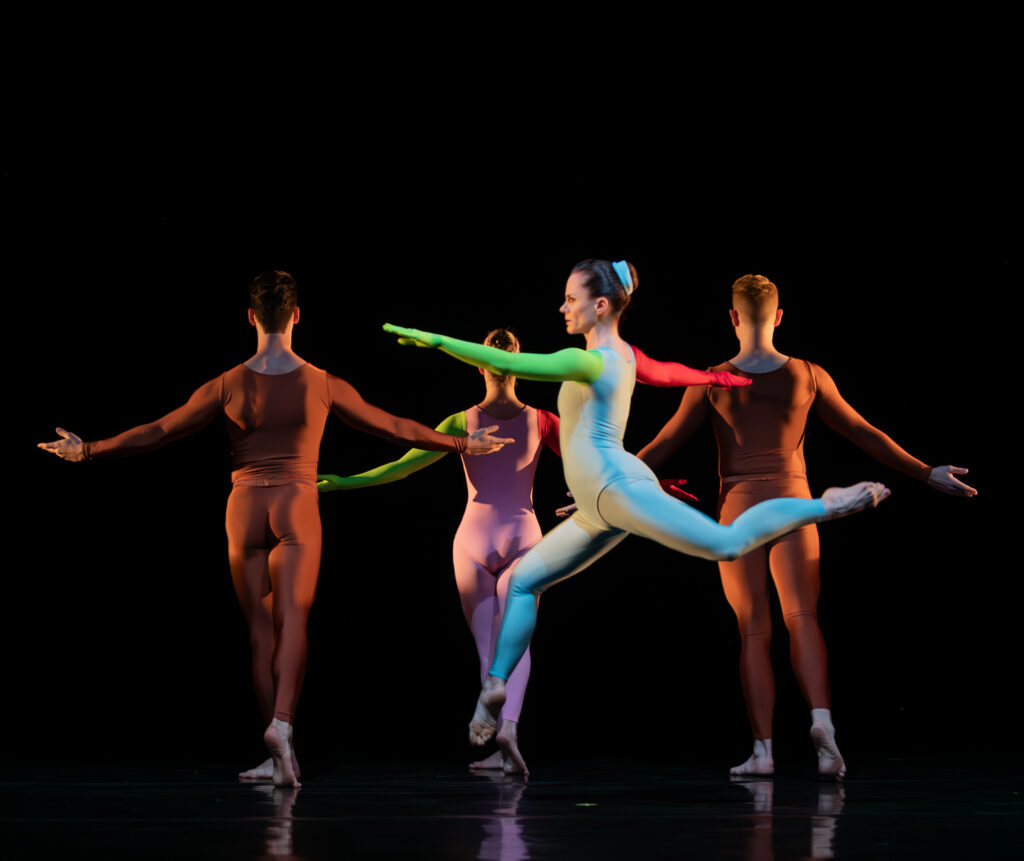THE HANGOVER REPORT – PAUL TAYLOR DANCE COMPANY revels in extremities via deep cuts and established masterworks
- By drediman
- July 2, 2024
- No Comments
Last week, Paul Taylor Dance Company returned to The Joyce Theater with two fascinating programs, each reveling in Paul Taylor’s extreme creations, particularly those from the formative years of his namesake company. Although not quite as accessible as your typical PTDC programs, these performances — under the umbrella billing of “Extreme Taylor” — gave fans of the legendary choreographer the rare opportunity to bask in the spirit of bold creativity that permeated the pioneering early days of the beloved company. This experimentation manifested itself in two camps — more on those below — via deep cuts and established masterworks from Taylor’s extensive repertory.
First, there were Taylor’s experiments in form. In Program A, this came through most clearly in Private Domain and Duet. In Private Domain (1969), the risk taking was evident in its conceptual play on voyeurism and highly stylized depictions of intimate bedroom activities. As such, the piece registers as much experimental theater as it does contemporary dance. Set to the music of Joseph Haydn, Duet (1964) is a brief piece for two dancers clearly inspired by the notion of love. In its sculptural simplicity, it mirrors its subject’s timelessness and universality in a way that’s almost startling in its clarity of intent. But perhaps the most fully realized of these experiments in form came in Program B with Post Meridian (1965). Set to an adventurous jazz score by Evelyn Lohoefer de Bock and costumed minimalistically by Alex Katz, there is something distinctly cool and alluringly abstract about Taylor’s choreography here, which is in stark contrast to the narrative/concept driven works for which he is most well known.
Then there are the Taylor pieces that pushed the envelope in terms of thematic and narrative extremities. In Program A, that prize certainly went to Big Bertha (1970), a sinister choreographic short story — the piece is heavy on mime work — that involves rape, incest, and the overall depravity of human behavior (the music is culled from the St. Louis Melody Museum collection of band machines). It’s a gutsy ballet that still manages to deeply disturb more than half a century after its creation. Just as unsettling was Runes (1975) in Program B. Using a spooky piano score by Gerald Busby, the episodic work features scenes of paganism and dark magic under the gaze of a rising moon. Suffice to say, some rather striking stage tableaus were struck over the course of the dance, particularly as (dimly) lit by Jennifer Tipton. I wouldn’t be surprised if Taylor here was inspired by Jerome Robbins’ The Cage, a piece with which Runes has more than a passing atmospheric resemblance.
Grounding each programs were a pair of masterworks, both of which in many ways represent the end game of Taylor’s evolution as a choreographer — Airs (1978) and Brandenburgs (1988). Set to rhythmically robust scores by two Baroque masters — Handel and Bach, respectively — both of these classics are the epitome of expression and athleticism, a combination which has become the company’s broader trademark. Over the two programs, PTDC’s current crop of dancers thrived under this aesthetic, invariably performing with vigor and openness. Seen side-by-side with Taylor’s earlier, more experimental works, one is more apt to appreciate both the obvious brillliance of their craft, as well as their place in the choreographer’s larger body of work — especially when one can study them as closely as one can in an intimate venue such as The Joyce.
RECOMMENDED
PAUL TAYLOR DANCE COMPANY
Dance
The Joyce Theater
Approximately 1 hour 40 minutes (including two intermissions)
Closed


 Copyright © 2024
Copyright © 2024
Leave a Reply